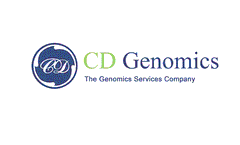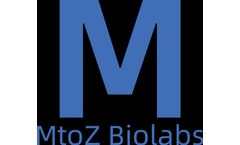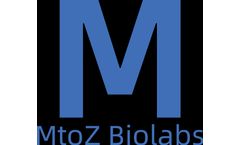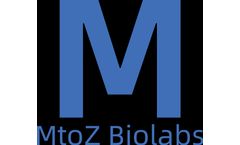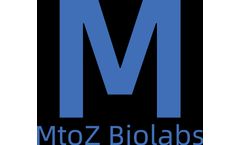Next Generation Dna Sequencing Articles & Analysis
75 articles found
Post-transcriptional modifications of RNA molecules include methylation, acetylation deamination, isomerization, glycosylation, thiolation and pseudouracil modification among other types. Methylation represents the predominant post-transcriptional modification found within transfer RNA (tRNA) molecules. tRNA methylation has maintained its evolutionary conservation while also exhibiting dynamic ...
For metagenomic analysis, the moderate cutting frequency of HindII often produces fragment sizes ideally suited for next-generation sequencing library preparation, typically ranging from 2-10kb depending on GC content. ...
For metagenomic analysis, the moderate cutting frequency of HindII often produces fragment sizes ideally suited for next-generation sequencing library preparation, typically ranging from 2-10kb depending on GC content. ...
In the quest to unravel the complexities of infectious diseases, understanding the intricate interplay between pathogens and their hosts is paramount. This requires a comprehensive analysis of gene expression and the regulatory mechanisms at play during infection. Traditional RNA sequencing (RNA-seq) has long been employed to investigate the gene expression profiles of microbial pathogens. ...
The advent of next-generation sequencing (NGS) has revolutionized the field of microbiome research, particularly through the analysis of 16S rRNA gene sequencing. This technique allows for a comprehensive understanding of microbial communities, providing insights into their composition and functional potential. This article outlines best practices for the bioinformatics analysis of 16S rRNA ...
Next-Generation Sequencing (NGS) has revolutionized genomics, providing unprecedented insights into the structure and function of genomes, transcriptomes, and epigenomes. A critical step in the NGS workflow is library preparation, which involves converting DNA or RNA samples into a form that can be sequenced. NGS ...
These tools, with their capacity for targeted genome editing, serve as invaluable conduits for generating customized zebrafish models that elucidate complex gene functions and interactions. ...
Unleashing the Power of NGS The evolution of sequencing technologies from first-generation methods to the sophisticated realm of next-generation sequencing technologies, also commonly known as NGS or high-throughput sequencing, has effectively mitigated the low-throughput challenges that plagued ...
When a ribosome is affixed to the polypeptide (protein) it is making, the ribosome-nascent chain complex (RNC) is the compilation of molecules that make up the ribosome. One of several methods can be used to halt the synthesis of the nascent polypeptide. RNCs are made and purified in labs to study the dynamics, biochemistry, folding, and interactions that the ribosome and proteins undergoing ...
Submission of sequence data to NCBI archives Next-generation sequencing, PacBio SMRT sequencing, and Nanopore sequencing, can generate numerous sequence data in a single run. ...
The backbone of clonality analysis is DNA and RNA sequencing, the most precise methods of determining the genetic makeup of cells. Through techniques such as next-generation sequencing (NGS), researchers can analyze huge volumes of genetic data, enabling the detection of even slight genetic variations among ...
Researchers have long been striving to identify antibodies that can combat pathogenic microorganisms. However, traditional methods of antibody discovery require substantial time and effort and often fail to identify the most effective antibodies. In recent years, the advancement of single-cell sequencing technologies has offered a new possibility for the screening of antibodies.What is ...
In-depth research on protein interaction plays a crucial role in life science research. Proteins are the main bearers of life activities, and their interactions form a complex molecular network within biological cells. Protein-Protein Interaction Sequencing (PPI-Seq) is an emerging technology. Based on high-throughput sequencing, it allows researchers to explore protein interactions at the whole ...
ESMO updated its recommendations for NGS in advanced cancers this year, urging broader use of NGS in additional cancer types and the inclusion of tumor-agnostic biomarkers. The ESMO Precision Medicine Working Group (PMWG) first published its recommendations for when to use next-generation sequencing (NGS) in routine practice for patients with metastatic cancers in 20201. At that time, based ...
Biopharmaceuticals and personalized medicine are hot fields in the development of the pharmaceutical industry today. Proteins, peptides, and antibodies are important molecules in the body and are important objects of research in biopharmaceuticals and personalized medicine. With the continuous advancement of protein, peptide, and antibody sequencing technology, they are playing an increasingly ...
Against this backdrop, Next-Generation Sequencing (NGS) was born. NGS sequencing technology has greatly reduced sequencing costs and significantly increased sequencing speed while maintaining high accuracy, but the sequence read length is generally low. In ...
Dr. Kate Sasser from Tempus led a discussion on the potential of antibody-drug conjugates (ADCs), their challenges in targeting tumor antigens, and the future of cancer treatment with Dr. Daniel Johnson, Dr. Funda Meric-Bernstam, and Dr. Kellogg Parsons. The oncology field is rapidly advancing with the development of antibody-drug conjugates (ADCs), offering new hope for ...
ByTempus
Introduction to Variant Analysis Rare DNA changes within a population of cells are the first manifestations of mutations, which are the fuel for evolution. The research of genomic variation between species and individual organisms has been revolutionized by next-generation sequencing (NGS) technologies. Variant detection and ...
Rare diseases, also known as orphan diseases, affect a small percentage of the population, making them particularly challenging to diagnose and treat. However, thanks to advancements in medical research and technology, significant progress has been made in the field of rare disease research, from developing accurate diagnostic tools to making effective small-molecule drugs. One of the biggest ...
Microdeletion / Microduplication of Chromosome The missing or replication of a small fragment of DNA leads to the microdeletion or microduplication of chromosomes. Typical examples include the 2q23.1 deletion which causes seizures and developmental delays and 15q11–q13 deletion relevant to Angelman syndrome. ...



